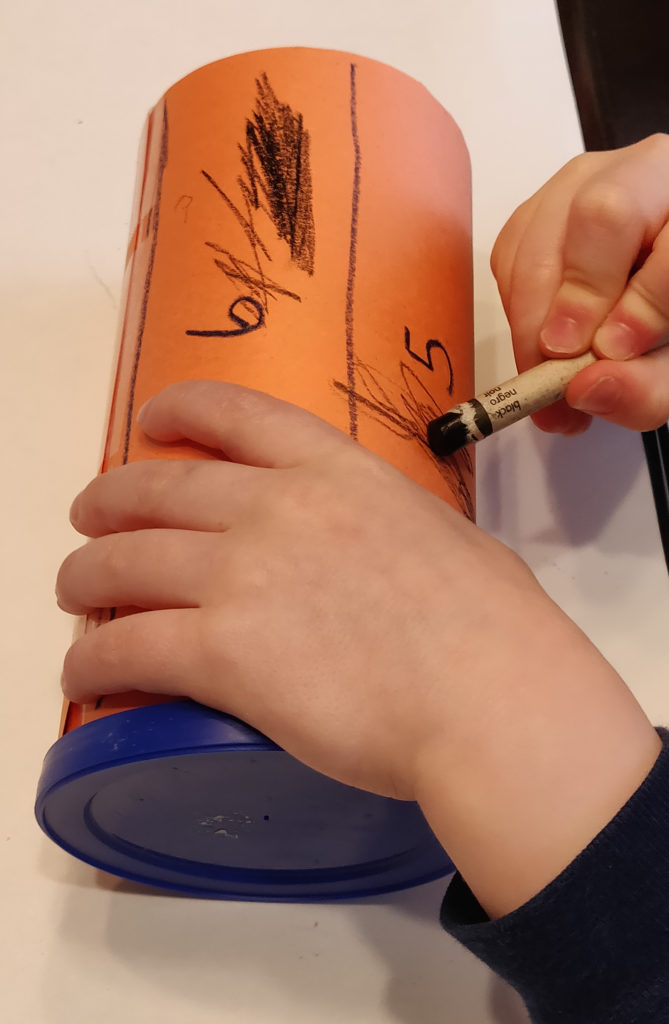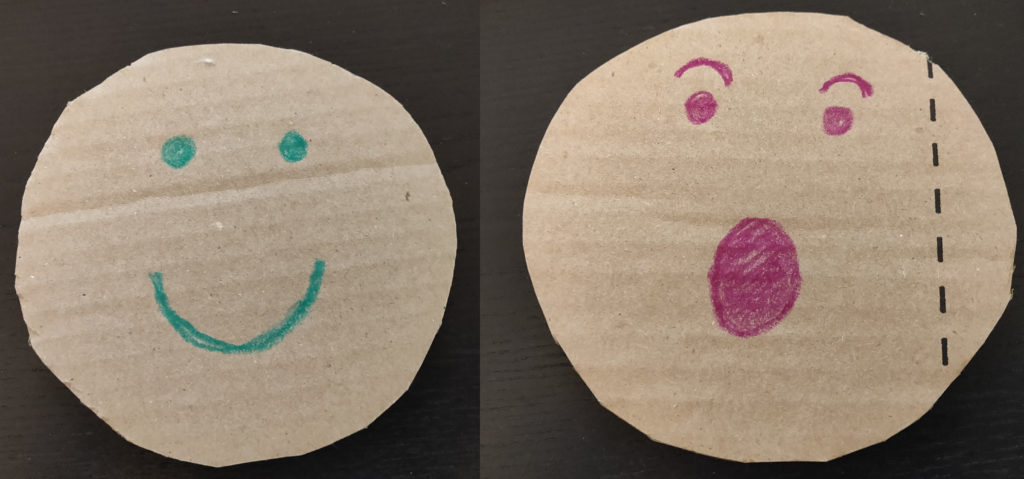Tips and Tricks: Easy dice alternatives for tabletop games
Jump to:
Why consider dice alternatives for your tabletop games?
When kicking off a tabletop game, there’s a lot of reasons to consider swapping your regular dice for something else, including:
- Worries about child choking hazard
- Small numbers being difficult to read due to eyesight
- Dice being difficult to pick up due to arthritis
- Players having a hard time counting
- Wanting to try a lawn game or active game session
If you are concerned about using small dice at your game table or are having difficulty using dice, here are some alternative options that you can use to help keep randomization in your tabletop games!
Also, in parallel to this article on dice alternative crafts and ideas, I put up an article for ready-to-go dice options that maybe a little more child friendly or fit some of the other needs listed above. I kept it separate to focus on crafts/DIY options here, but if you are looking to buy alternative dice, please check out my other article!
Dice alternative crafts for tabletop games:
Kid craft dice alternative: the number tube

To make your own dice alternative number tube, you need:
- Cylindrical container (I used a leftover breadcrumb tube)
- Construction paper
- Crayons, makers, or a pen
- Scissors

Simply tape the paper around the tube and cut off the excess paper. Then draw lines and numbers on the tube for how you choose to randomize for your tabletop game.
This gives an easy to roll option with large numbers that were easier to read than on dice. You can use mostly scrap materials to make this, so there’s little to no cost, and it took me about 5 minutes. My kid had a lot of fun playing with this, and it is light enough to where if he rolled or threw it a bit too hard, no one got hurt. He also really liked helping to color it afterwards.
General DIY dice alternative: numbered cards

First off, you could definitely use numbered cards from a standard deck of playing cards as a dice replacement for your tabletop games if you don’t want to make your own cards, and, there are in fact, a lot of games that use a deck of cards for randomization already (like Omotenashi).
If you don’t have cards on hand or want to make this into a craft, you will need:
- Thick/not transparent paper (I used folded over notecards)
- Crayons, markers, or a pen
- Optional: Tape
Write what you want on one side and then optionally wrap in packing tape to make it water resistant…. or tape a second layer on the back so the cards aren’t see-through. Then you either shuffle the cards or spread them out on the table to replace the randomized dice effect.
These were nice to use with my kid because he was already familiar with using learning flashcards, and it still let him practice counting the dots like he would with dice. You can also add more cards as your child is able to count higher or to match any size dice. This cost almost nothing to make and took about 5-10 minutes.
Kid craft dice alternative: pass/fail discs

Flipping coins can also replace your dice, however, they can pose the same small-parts risk as dice too. Some games do come with their own coin flipping mechanics (like FlipTales), but you can also add your own jumbo sized “coins” and randomization too!
To make these pass/fail discs, you will need:
- Cardboard (I used scrap from a shipping box)
- Scissors
- Crayons, markers, or a pen
For this dice replacement, cut out a disc from a piece of cardboard and then draw appropriate symbols on both sides. For the symbols, I used a happy face and an “uh-oh” face, but you could also use numbers, X’s and O’s, coloring them red and green, heads and tails, etc. And then you let your players throw them about and see where they land!
This took me about 1 minute to make, and it just used scrap material, so it’s another simple and affordable alternative, plus, it’s great for kids who aren’t used to counting yet since it just gives a pass/fail reading.
You can also add a little complexity by having multiple discs:
1 disc odds = 50% heads, 50% tails
2 discs odds = 25% both heads, 50% one heads + one tails, 25% both tails
So, for 2 discs, you can say:
One heads + one tails = you pass
Both heads = super pass (like rolling a nat 20 in D&D)
Both tails = does not succeed
You could also start introducing some addition by putting numbers on the discs and requiring adding them up to a certain score to succeed – this can be a great precursor to using dice in the same game.
General DIY dice alternative: Draw a number or picture from a cup

I really like using this method because it lets me modify the randomization very directly, and I actually made up a system (Glyfi) that uses this like you would a deck building game, if you’re looking for some examples beyond just using numbers.
For this dice alternative crafy, you will need:
- Paper
- Scissors
- A cup or other container
- Crayons, markers, or pen
Cut a sheet of paper into slips, then write numbers or symbols on the slips of paper. Fold the pieces over and put them in the cup. Then, have your player choose one of the slips of paper to use instead of their dice roll.
This is another really fast option that gives you a lot of flexibility. You can use numbers to directly simulate dice or you can try using an X/O, P/F, happy face/sad face, etc to represent pass and fail without using numbers. If you want to vary the odds, you can easily change the ratio of symbols that you use.
For example: If you have 5 pass and 5 fail slips (50% odds of pass, 50% odds of fail) but want to weigh more toward success, you can always change it to 8 pass and 2 fail slips (80% odds of pass, 20% odds of fail). As a game leader or game designer, this lets you balance a game a bit more than you normally could with dice, and is pretty easy to introduce to players at the same time.
Other dice alternative options and crafts:
General DIY dice alternative: Spinners
I did not put a spinner craft above because there are a lot of spinner crafts already out there. There’s ones with fidget spinners, folded paper, pencils, paperclips, rubber bands, etc. If you prefer to use a spinner it can be a really good customizable option, but just make sure that if you are making the swap from dice due to them having small parts, remember to pick a spinner that will be safe for your players as well (i.e. something like a paperclip or pushpin could pose similar choking risk as dice).
Classic dice alternative for showdowns: Rock, paper, scissors
Rock, paper, scissors is another one that can be a great substitute for dice, and it doesn’t require anything more than your hands! As long as your players are able to make the rock, paper, scissors symbols, it can work for any versus match. You can also use objects (a rock, safety scissors, and a sheet of paper) or flashcards to replace the hand motions if your players need them due to hand dexterity.
Players can play rock, paper, scissors versus the game master (GM) to see if their attack hits, they succeed in a check or challenge, etc. instead of rolling against the GM’s dice, or it can also be used against a pre-set requirement. For example, the GM would set that the player needs to choose rock or scissors to complete a skill check, but if they choose paper, they would not pass. This can be a little faster than playing the full rock, paper, scissors every time there is a check and be an easy no-math way to introduce randomization.
The tech dice alternative: Electronic randomizers
If you are OK with allowing your players to have a screen at the table, there are lots of dice rolling apps or online options that can be used instead of physical dice. A lot of virtual tabletop systems (Roll20, D&D Beyond, Tabletop Simulator, etc) also have built in dice rolling systems that total your numbers up for you.
If you are concerned about screens being a distraction at the table or players wandering past the dice roller app, you could also try an actual stand-alone calculator. Most graphing calculators will have a random number generator; it can require a little figuring out, but if you search for your calculator model and “random number generator” online, you should be able to find the specific syntax to use for that specific calculator (i.e. for my graphing calculator, I would type “TI-84 random number generator” and would get this tutorial).
Thank you, and please let me know if this helped you find some good dice substitutions!
I hope this article helps you find some tools or generate ideas about alternatives to using dice! A lot of these options are customizable and have tons of options for tweaking probability. If you have ideas or use any of these options because of this article, please let me know below, and make sure to subscribe to the TTRPGkids monthly newsletter to stay up to date on the latest reviews, tips and tricks, game and podcast list updates, and more!



4 thoughts on “Tips and Tricks: Easy dice alternatives for tabletop games”